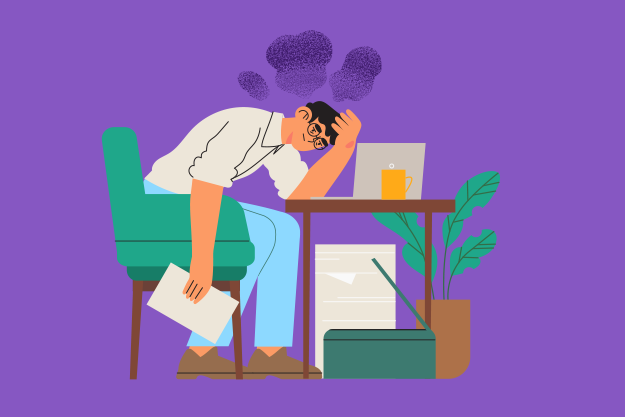
I was in the office when I found out my dad unexpectedly died of a heart attack. I took the call from a hallway outside the newsroom where I worked while my coworkers and bosses watched with concern.
We don’t like to think about this reality: we spend most of our lives at work, and life happens while we’re there. The support of my coworkers is one of the things I remember most from that time. Yet, despite this outpouring, it took me years to find the resources I needed to move past grief on my own. A few words of support are always worth the effort, but I learned during this time that compassion alone doesn’t offer employees enough support.
Most of us will experience a loss at some point in our working lives. By providing thoughtful support to employees, you’ll make things easier during a difficult time.
Offer support
Express your support for grieving employees from the outset. Acknowledging something as painful as death might be uncomfortable, but remaining silent leaves your employees feeling alienated and alone.
As soon as it’s appropriate, ask your grieving employee if they’d like news of their loss to be shared with coworkers. When I lost my dad, our managing editor sent an intranet message to my coworkers while I was making funeral arrangements. I wasn’t sure how to spread the news myself, but I was grateful for the words that followed.
Your employees might feel differently, so be sure not to share without their approval. Sending flowers, a card, or an appropriate show of sympathy to your employee or their family is an essential first step. Just remember that flowers alone won’t cut it—your employee will need continued support to process grief while on the job.
Give employees time to grieve
Bereavement leave policies can be helpful, especially when employees need to plan funeral arrangements, deal with estate issues, or complete other tasks on behalf of their loved ones.
Where I think these policies fall short is in the way they seem to put a time limit on grief. For one thing, your employees might not know how much time they need away from work to process. Technically, bereavement includes mourning and grief—the period of time someone is sad after losing a loved one. It’s unlikely that the typical 3-5 day bereavement leave policy covers that completely.
According to the American Cancer Society, no period of grieving looks the same. They put it this way: “…grieving includes the entire emotional process of coping with a loss, and it can last a long time. The process involves many different emotions, actions, and expressions, all of which help a person come to terms with the loss of a loved one.”
Trouble concentrating at work is one of the most recognized symptoms of grief. A few others include mood swings, social withdrawal, difficulty sleeping—all things that will affect the way they work. For one thing, employees struggling with mental and emotional stress, like grief, are more likely to miss work and be less productive. Even one struggling employee can negatively impact company dynamics.
So while bereavement leave may offer a guideline, it might not be enough. Don’t expect employees to return from a period of bereavement leave and be back to their old selves. Having said that, it’s not necessary to treat employees with kid gloves when they come back from a period of leave after a loss. For me, the structure of work was a welcome relief.
For all these reasons, a policy of flexibility, in addition to a set bereavement leave period, might be more beneficial during this time. Work with employees, so they feel comfortable asking for the time they need to deal with their affairs and focus on their work.
Open communication
Death makes us uncomfortable, so we avoid bringing it up. We tell ourselves we don’t want to remind coworkers about a recent loss, when in reality, we don’t like sharing the associated pain.
When your employees experience a loss, you can help just by asking them how they’re coping. Encourage their supervisor to regularly check-in, as well. They may not want to talk, but the invitation might also give them space to reflect and process while rejoining the workplace. At the very least, it shows that your workplace culture values honesty and work-life balance.
So what if employees are not coping well?
In this case, pointing employees to counseling can be incredibly helpful. Your Employee Assistance Program (EAP) is a short-term counseling benefit designed to help employees cope with a variety of life stressors impacting work performance, including grief (see Does Short-Term Counseling Really Work?).
The problem is that though most companies offer this benefit, their employees may not know that it exists. Lack of awareness keeps employees from getting the help they need. Without that help, overcoming grief and dealing with death in the workplace is a long and lonely process.
The prevalence of death in the workplace is one reason a year-round benefits communication plan is so important. Instead of singling out employees when they are grieving, consider highlighting your EAP’s grief counseling benefit as part of your regular plan. That way, when they need help, they’ll know about this resource (see Why Employees Don’t Use Your EAP Program). Though you may not be able to measure the effectiveness of your EAP, it could make an incredible difference in the lives of grieving employees.
Helping employees deal with death in the workplace
Death is a part of life, and that means it will touch our working lives, too. Though it can be difficult, workplace support is invaluable to your employees experiencing the death of a loved one. To help employees process grief on the job, you need to ensure they have the time, resources, and most importantly, the open line of communication they need to transition back after a loss.
The First Step in Handling Employee Substance Abuse
In the years since I began opening up about my own family’s struggle with substance abuse, I’ve found that nearly everyone I know has a similar...

Is Employee Burnout Taking a Hidden Toll on Your Workplace?
When the White House promoted Summer 2021 as a “Summer of freedom. A summer of joy” in a letter to encourage local officials to hold public events...




 Claire Wiseman Imber
Claire Wiseman Imber

